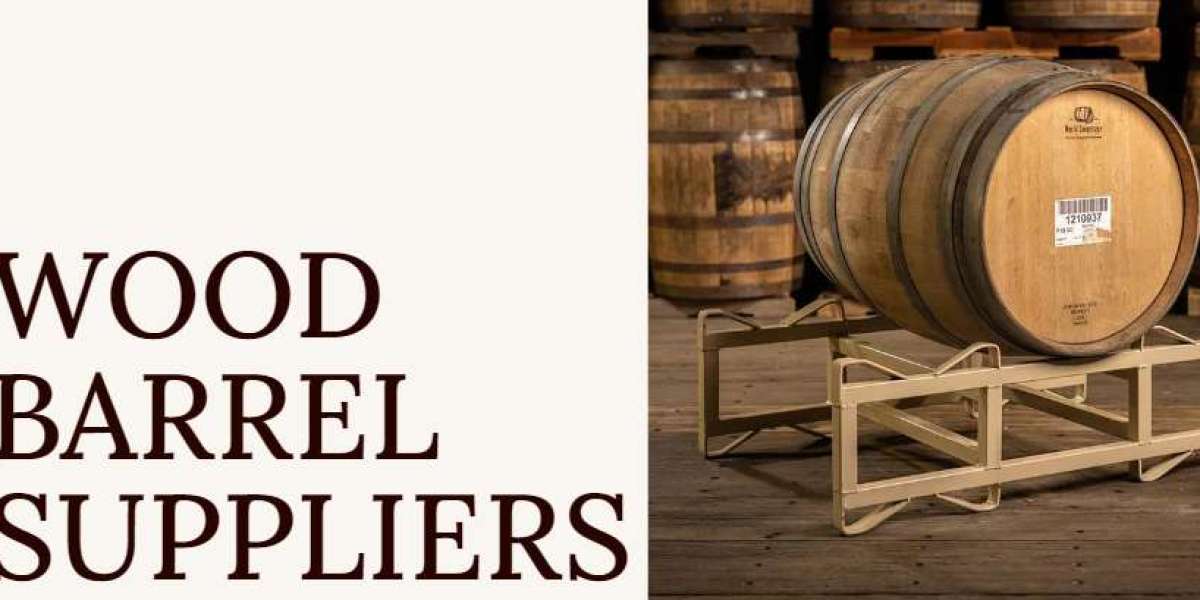When we think of whiskey, the warm, golden liquid swirling in a glass often steals the spotlight. But behind the scenes, an unsung hero plays a crucial role in shaping its flavor, character, and identity: the whiskey barrel. These wooden vessels are not just containers; they are an integral part of the whiskey-making process, adding depth and complexity to every sip. Let's dive into the fascinating world of whiskey barrels and discover their significance in crafting the spirits we cherish.
What Are Whiskey Barrels?
A whiskey barrel is a wooden cask traditionally made from oak. Oak is the wood of choice because of its unique properties—it is sturdy, porous, and imparts desirable flavors to the whiskey. Whiskey barrels are typically charred on the inside, a process that caramelizes the wood’s natural sugars and creates a layer of charcoal that filters out impurities, enhancing the smoothness of the spirit.
The use of whiskey barrels is deeply rooted in history, with origins dating back to the early days of distillation. Today, they remain a cornerstone of the whiskey industry, with each barrel contributing its distinct signature to the final product.
The Aging Process: The Magic Inside Whiskey Barrels
One of the most significant roles whiskey barrels play is during the aging process. After distillation, whiskey is a clear, raw liquid with a harsh taste. It is only after years of maturation in a barrel that it transforms into the rich, flavorful drink we recognize.
As whiskey rests in barrels, several key chemical interactions occur:
- Extraction of Flavors: The charred oak releases compounds like vanillin, tannins, and lactones, which contribute notes of vanilla, spice, and coconut.
- Oxidation: Small amounts of oxygen enter the barrel through the wood’s pores, softening the whiskey’s flavor over time.
- Evaporation: Known as the "angel’s share," some whiskey is lost as it seeps through the wood, concentrating the flavors of what remains.
- Integration: The whiskey interacts with the wood, balancing its flavors and creating a harmonious blend.
The type of whiskey barrel, the length of aging, and the storage conditions all influence the final character of the spirit, making each batch unique.
Types of Whiskey Barrels
While oak remains the preferred material, whiskey barrels come in various forms, each imparting different qualities to the spirit:
- American Oak Barrels: Known for imparting bold flavors like vanilla, caramel, and spice, American oak is commonly used for bourbon production. These barrels are often repurposed for aging other types of whiskey around the world.
- European Oak Barrels: Used in Scotch whisky production, European oak adds subtler notes of dried fruit and nuts, often paired with flavors from previous contents like sherry or wine.
- Japanese Mizunara Oak Barrels: Highly sought after for their rare and exotic flavors of sandalwood and spice, Mizunara barrels are a hallmark of Japanese whisky.
- Reused Barrels: Many distilleries use whiskey barrels that previously aged wine, rum, or other spirits to create innovative flavor profiles.
Whiskey Barrels and Sustainability
With the growing focus on sustainability, the whiskey industry has embraced practices to ensure whiskey barrels are used responsibly. Many distilleries give used barrels a second life, either by aging other spirits or repurposing them for furniture, smoking chips, or home decor. The art of coopering, or barrel-making, also emphasizes craftsmanship, ensuring barrels are durable and long-lasting.
Whiskey Barrels in Craft Distilling
The rise of craft distilling has brought renewed attention to the importance of whiskey barrels. Small-scale distilleries experiment with different woods, charring levels, and barrel sizes to create distinctive expressions of whiskey. Some even use barrels with unconventional treatments, such as toasting or infusion with other ingredients, to push the boundaries of traditional whiskey-making.
Collecting Whiskey Barrels: A Growing Trend
Beyond their functional use, whiskey barrels have become collectibles for enthusiasts and home distillers. Miniature barrels allow hobbyists to age their spirits, while full-sized barrels are prized for their aesthetic appeal and historical significance. Barrel-aged cocktails are another creative trend, showcasing how whiskey barrels can enhance not just spirits but entire drink recipes.
The Future of Whiskey Barrels
As the whiskey industry evolves, so does the role of whiskey barrels. Innovations like accelerated aging techniques, hybrid woods, and experimental finishes are reshaping how barrels are used. However, tradition remains at the heart of the craft, with master distillers relying on the time-tested magic of whiskey barrels to produce spirits that stand the test of time.
Conclusion
Whiskey barrels are more than just vessels; they are storytellers, flavor-builders, and guardians of tradition. From the charred interior that gives whiskey its signature notes to the years spent aging in quiet warehouses, these barrels are essential in transforming raw spirit into liquid gold. As we raise a glass of whiskey, it’s worth taking a moment to appreciate the humble whiskey barrel—a symbol of craftsmanship and patience that lies at the heart of every great dream.








